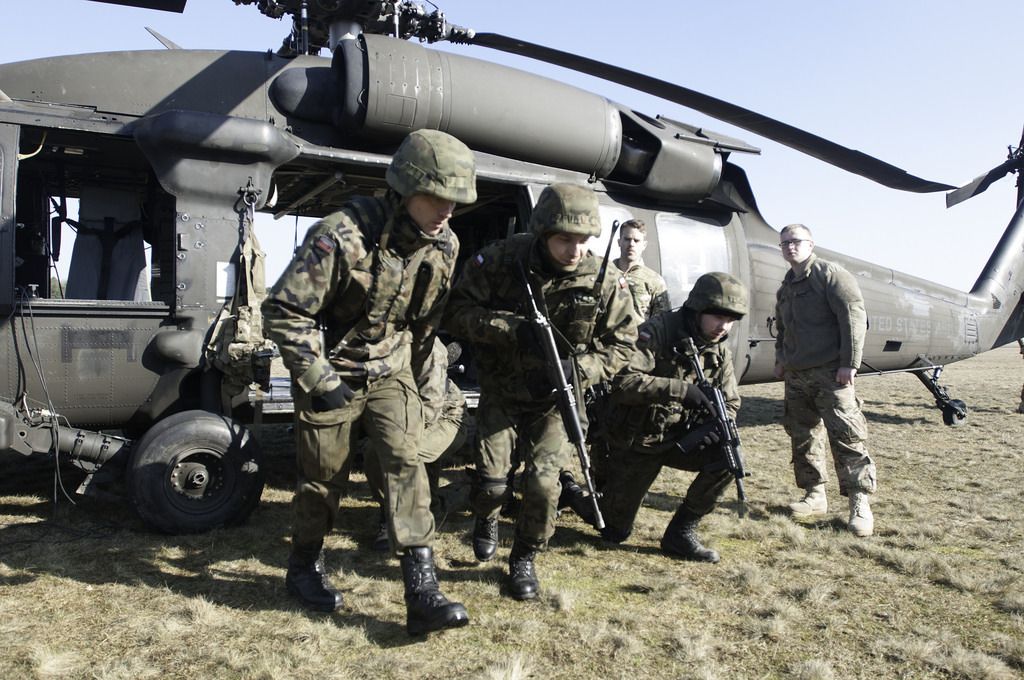On a sunny, winter morning, with the last of the morning’s frost dissipating into fog, U.S. troopers and Polish infantrymen met at the edge of the airfield here to await the UH-60 Black Hawk’s arrival and the beginning of medical evacuation training.
This is the latest in weeks of training between Dragoons assigned to K Troop, 3rd Squadron, 2nd Cavalry Regiment, or CR, and Polish infantrymen from 3rd Company, 1st Infantry Battalion, 12th Mechanized Brigade. The training will culminate in an upcoming live-fire exercise as part of Operation Atlantic Resolve.
Operation Atlantic Resolve is a NATO exercise led by the United States to test the alliance’s interoperability with Polish, Latvian, Lithuanian and Estonian military forces while demonstrating their commitment to a safe and prosperous Europe.
The medical evacuation, also known as MEDEVAC, training was spearheaded by a Black Hawk flight crew from B Company, 3rd Battalion, 158th Assault Helicopter Brigade, or AHB, based out of Katterbach, Germany. In the hours before, troopers from 2 CR prepared for the day by going over their training schedule before loading into Strykers and heading to the airfield. Meanwhile, the Polish moved out in their armored personnel carriers and plotted their own training points on a terrain map at the airfield’s edge.
Similar tactics, with different execution, is one of several challenges facing military members as they seek to streamline operations conducted in a joint coalition environment. Where the end goal is the same, getting the details right between forces and using different doctrine to achieve that end state can result in miscommunication and a potentially failed mission.
U.S. and Polish forces have trained for more than a year to hone their interoperability skills with the MEDEVAC training being no exception. Both militaries have spent years developing the most efficient means of removing injured troops from the battlefield and each have their preferred method of achieving that result.
For the Black Hawk aircrew, responsible for the safety and security of all members involved, that meant providing instruction to Polish infantrymen using U.S. MEDEVAC procedures; watching for and responding to flight crew hand signals, and removing thermal blankets (used to stabilize the injured soldier’s core body temperature) from the litter before it is sucked into the helicopter’s rotor blades, etc.
Chief Warrant Officer 3 John Kimball, a Black Hawk pilot from B Company, 3-158th AHB, has been involved in the MEDEVAC training of allied soldiers in several countries, which includes Poland. He said that while training allied soldiers using U.S. procedures is common, it is a collaboration that works both ways.
“I think working with our allied partners has been beneficial all around,” Kimball said. “You get to see different points of view, as well as different ways of doing something that maybe you haven’t thought about in the past, and you can adapt it to the way you do things.”
The lessons learned by military members of both armies will suit them well, not just in training, but in real-world situations in which they may find themselves in the future. The end goal, enduring peace and stability in Europe forged through effective partnerships, will become easier for both allied armies to achieve.










